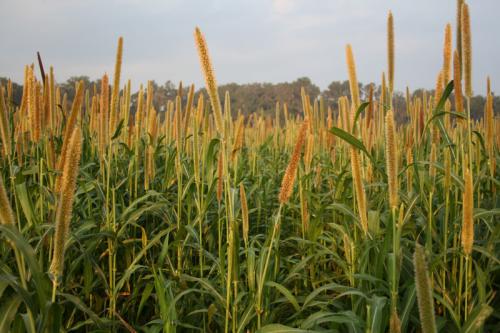By implimenting any of the following steps, crops that have already been planted would stand a better change when faced with the effects of a hurricane:
1.Planting trees and hedges around fields to reduce run-off
By planting trees surrounding the crops, it reduces the exposed soil which would reduce the amount of soil stripped away by rainfall. By protecting the soil, it is possible to maintain the environment that plants need to survive. In addition to protecting the soil, by planting trees and hedges among the crops, the leaves act as a shelter for the plants from the impact of heavy rains. Trees also act as a windbreak that reduce the impact of heavy winds on the fragile crops.
2.Building dikes and irrigation channels/pipes to control the flow of water onto crops
By building dikes, it is possible to reduce the flow of water on the surface, to prevent water from rushing through fields and damaging crops. Irrigation channels allow water is able to flow off the land with least resistance from crops and soil, taking the least amount of natural material with it. The channel provides a safe path of water to leave the agricultural area without damaging the crops.
3.Building flood-resistant storage facilities for grain
By creating flood resistant storage facilities for crops, particularly grain, harvests become better protected in the event of a flood due to hurricanes. When building flood resistant storage, this refers to storing crops in an elevated region, out of the way of immediate flood waters. Also, the materials that store the crops should not be easily permeable to water.
4. Loosen up soil after harvest to allow for water to permiate and not settle on surface
By loosening the soil, water is better able to enter the soil and move downward, limiting the amount of water on the surfce available to create floods. This reduces the risk of crops being flooded by heavy rains.

Very informative. A good read.
ReplyDelete